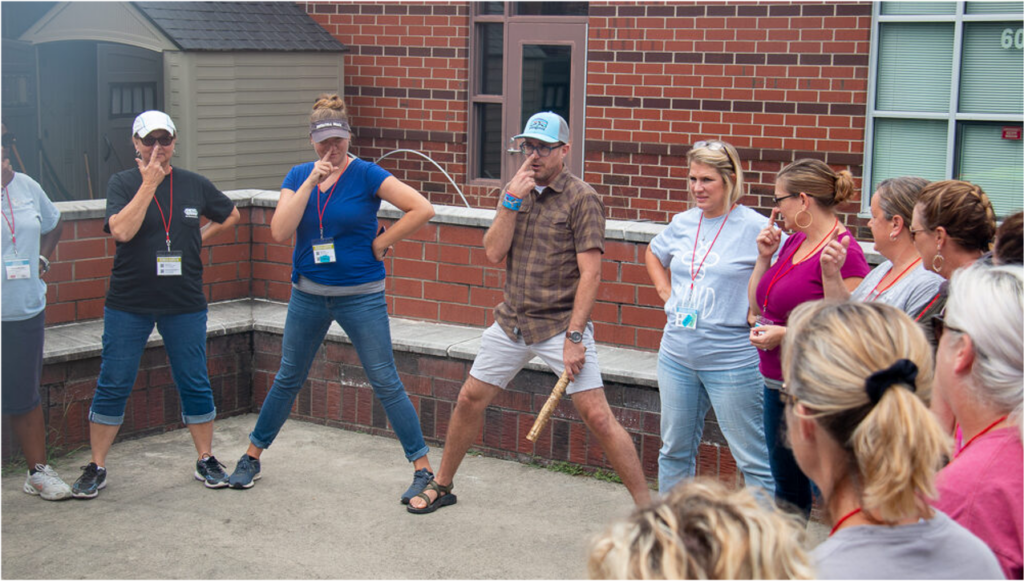Classroom Management Outdoors
1-2 days before
- Let students know ahead of time in case they need to bring a jacket, shoes etc.
- Assess area for hazards and distractions
- Set up any items needed, move seating etc.
- Let the office know where you will be
- Gather any necessary paperwork/ICE
Day-of, before going outside
- Set clear expectations before you leave the classroom.
- Students equate outside with recess, remind them of what you expect them to do.
- Take a bathroom break before going outside
- Gather “Go Bags,” seating, 5-gallon buckets, etc.
On the way to the outdoor classroom
- Pose a question that can be used as your daily warm-up
- What is one thing you notice with your eyes?
- What is one thing you hear with your ears?
- Students can reflect on the question or discuss with a partner
- For a longer walk, students may form two lines, six-feet apart (eagle wings), students share their answers with their partner. About halfway to your destination, have the first student in one line go to the back of the line and everyone else moves up. They can then share with a different partner or answer a different question.
Once outside

- Circle up
- Forming a circle allows all students to see you as well as your ability to see all students.
- It helps students feel welcome and included; everyone is equal.
- Use superhero pose to maintain distance and instill confidence.
- Welcome students
- This may be a very new experience for some students; some may be very excited while others may be anxious. A few minutes of circle time can set the tone for the experience. This is a time for learning, and all are welcome. Ask a question of students and allow each student to answer.
- What is one word that describes how you are feeling today?
- What is one sound you heard on the way outside?
- To allow all students to be heard, introduce the ASL sign for “I agree.” Students not speaking can use this to feel heard without taking up too much time.
- This may be a very new experience for some students; some may be very excited while others may be anxious. A few minutes of circle time can set the tone for the experience. This is a time for learning, and all are welcome. Ask a question of students and allow each student to answer.
- Set boundaries
- Cones and flags can be used if landmarks are not available.
- Use positive language to describe where students are allowed to go.
- Determine a call back signal. How will students know it is time to return to the circle?
- Allow time for exploration
- “Clarity is Kindness”
- M – Cue the Movement – How will they know when to go?
- V – Name the Volume – silently, quietly, loudly, etc.
- P – How do you want the students to Participate? What will they be doing (be specific, exploration time should have a focus)?
- T – Name the Time
- Example: “When I say go, you will have 3 minutes to quietly explore the garden and find something smooth and something rough. When you hear the wolf howl you will quietly return to the circle with your object.”
- Be sure to let them know if there are any objects off limits.
- “Clarity is Kindness”
- Lesson
- Keep lessons short to begin with. This will leave the students wanting more time in the garden/outdoor classroom.
- Don’t be afraid to let the garden be the teacher. Embrace the teachable moments.
- Expect distractions and decide which distractions to indulge and when to move on.
- Wrap up and walk back to class – this can be quiet reflection time or focused on a wrap-up question.
Key Take-aways
- Lean into the uncomfortable. This may be a learning curve for all, but leaning into the uncomfortable can help students learn to cope with difficult situations. Don’t give up if your first time does not go as expected.
- The experience should be positive, nurture their love for nature, etc